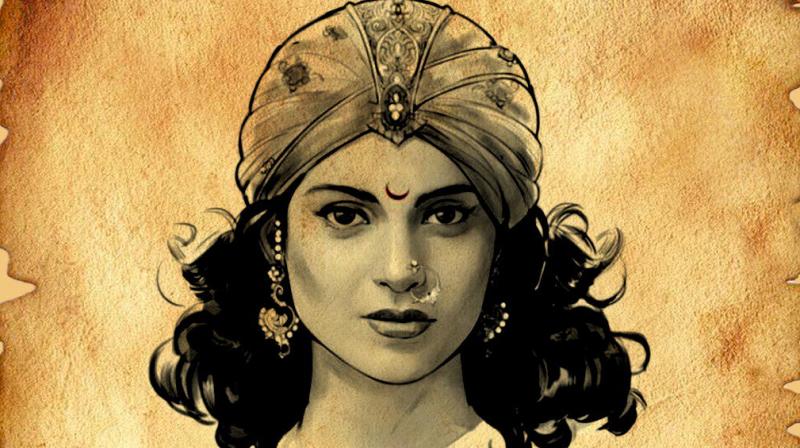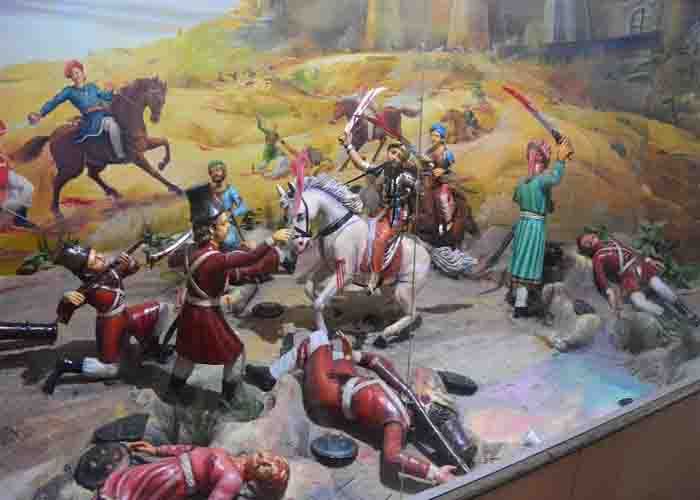Rani Laxmi Bai- the woman who`s valor terrified every living and dead
| Monday | 18th June, 2018Summary:
“Bundele har bolo ke mooh humne suni kahani thi, Khoob ladi mardani vo toh Jhansi wali Raani thi” these powerful words by Subhadrakumari Chauhan echoes loud in the ears of every one who heard or read about the unconquerable, the brave and the fearless Queen of Jhansi, Rani Laxmi Bai. Rising like a mighty tigress in the revolt of 1857 riding horses with swords in hand and son on the back, Manikarnika Tambe left every enemy on the battleground gasping for breath.
On 160th Death anniversary of the Queen, let’s take a sneak peek into the life of the warrior that spell struck every living and dead.
Not Laxmi Bai but Manikarnika Tambe was here original name

Most of ud are unaware that the Queen was born as Manikarnika Tambe who was married at the age of 14 and upon marriage with Gangadhar Rao in 1834 she changed her name to Lakshmi Bai, in honour of Goddess Lakshmi.
Laxmi Bani broke the barriers in her early childhood

Unlike other girls, she grew up in a different independent environment where she was educated in shooting, horsemanship, and fencing.
Rani Laxmi Bai stood up to adopt a child

In 1851, she birthed a baby boy, Damodar Rao. In an unfortunate event, he died when he was just 4 months old. Later, Rani Lakshmi Bai and the Maharaja adopted the son of the Maharaja`s cousin.
The Queen rose up to defend her state Jhansi

Under Doctrine of Lapse, the British wanted to take possession of Jhansi. Hugh Rose, who commanded the British forces, was taken aback to see the fort well-defended. He demanded to surrender and threatened to destroy it if his command was refused.
British Commander of forces proclaimed that "Rani Laxmi Bai was most hazardous of all Indian leaders"

In the British report of this battle in Jhansi, Hugh Rose, the Commander of the British Army, commented that Rani Lakshmibai is "personable, clever and beautiful" and that she is "the most dangerous of all Indian leaders".
The final journey of Indian soldier Rani Laxmi Bai

Unlike a usual queen, Rani Laxmi Bai was departed in the garments of a soldier, mounted on her charger. She started her journey to the humble abode at 22 and was buried in Phool Bagh, Gwalior. Defending Jhansi she stood like an indomitable wall that British couldn’t shake.
Until her last breath and with the last drop of blood she fought and she fought like a true soldier protecting her motherland against British troops.
“Bundele har bolo ke mooh humne suni kahani thi, Khoob ladi mardani vo toh Jhansi wali Raani thi” these powerful words by Subhadrakumari Chauhan echoes loud in the ears of every one who heard or read about the unconquerable, the brave and the fearless Queen of Jhansi, Rani Laxmi Bai. Rising like a mighty tigress in the revolt of 1857 riding horses with swords in hand and son on the back, Manikarnika Tambe left every enemy on the battleground gasping for breath.
On 160th Death anniversary of the Queen, let’s take a sneak peek into the life of the warrior that spell struck every living and dead.
Not Laxmi Bai but Manikarnika Tambe was here original name

Most of ud are unaware that the Queen was born as Manikarnika Tambe who was married at the age of 14 and upon marriage with Gangadhar Rao in 1834 she changed her name to Lakshmi Bai, in honour of Goddess Lakshmi.
Laxmi Bani broke the barriers in her early childhood

Unlike other girls, she grew up in a different independent environment where she was educated in shooting, horsemanship, and fencing.
Rani Laxmi Bai stood up to adopt a child

In 1851, she birthed a baby boy, Damodar Rao. In an unfortunate event, he died when he was just 4 months old. Later, Rani Lakshmi Bai and the Maharaja adopted the son of the Maharaja`s cousin.
The Queen rose up to defend her state Jhansi

Under Doctrine of Lapse, the British wanted to take possession of Jhansi. Hugh Rose, who commanded the British forces, was taken aback to see the fort well-defended. He demanded to surrender and threatened to destroy it if his command was refused.
British Commander of forces proclaimed that "Rani Laxmi Bai was most hazardous of all Indian leaders"

In the British report of this battle in Jhansi, Hugh Rose, the Commander of the British Army, commented that Rani Lakshmibai is "personable, clever and beautiful" and that she is "the most dangerous of all Indian leaders".
The final journey of Indian soldier Rani Laxmi Bai

Unlike a usual queen, Rani Laxmi Bai was departed in the garments of a soldier, mounted on her charger. She started her journey to the humble abode at 22 and was buried in Phool Bagh, Gwalior. Defending Jhansi she stood like an indomitable wall that British couldn’t shake.
Until her last breath and with the last drop of blood she fought and she fought like a true soldier protecting her motherland against British troops.